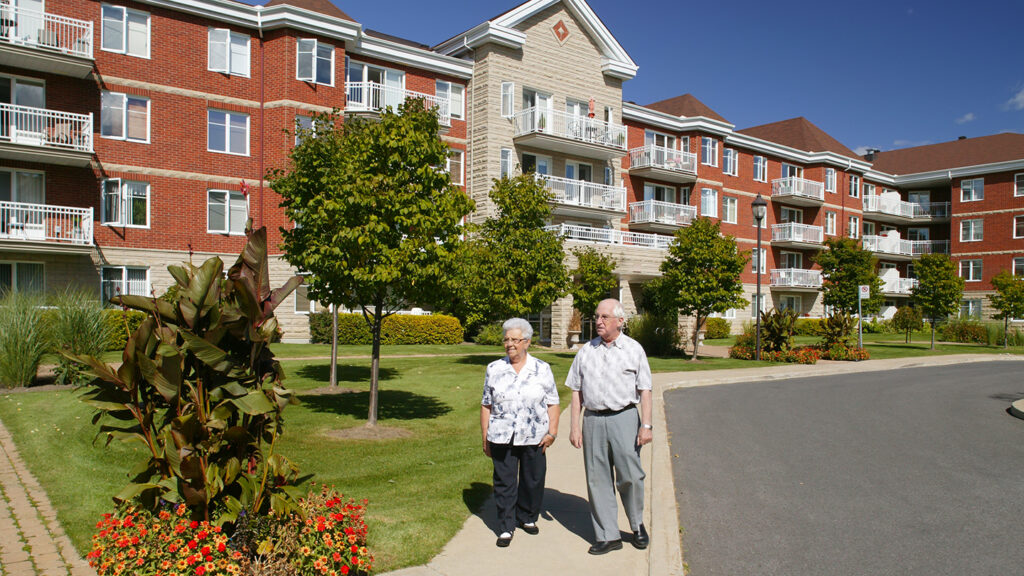
Although frailty levels increase in the months leading up to a move into a senior living community, that vulnerability quickly levels off and continues to decline after move-in, according to research released Tuesday by NORC at the University of Chicago.
The finding applies to nursing homes as well.
In a study funded by a grant from the National Investment Center for Seniors Housing & Care, NORC highlighted older adults’ vulnerability to declining health outcomes before and after entering senior living — independent living, assisted living, memory care and continuing care retirement / life plan communities — as well as skilled nursing facilities.
Researchers said that the change in vulnerability shortly after moving into a long-term care property is an important concept and speaks to one of the many value propositions provided by the settings for older adult residents.
“This suggests that vulnerability is not a permanent state, but a temporary state of being that can be corrected with the proper interventions,” NIC Senior Principal Ryan Brooks told McKnight’s Senior Living. “For operators, this suggests that congregate senior living can help restore a measure of vitality and independence for residents.”
One of the key takeaways for operators, Brooks added, is that the research points to investing in nonmedical supports — social engagement, community involvement, balanced nutrition, transportation and access to exercise — as critical to resident overall health, well-being and safety.
“The research really does drive home the value proposition for senior housing and care that’s offered to residents,” Brooks said. “What this shows is, senior housing has the ability to recognize a person’s vulnerability to declining health outcomes and then in turn offer supportive services and healthcare to them. It can lead to greater resident vitality and quality of life.”
A review of Medicare claims of residents from 14,201 senior living and care properties found that residents experienced a 10% decline in frailty levels one year after moving into a community, according to the research. Using Harvard University’s Claims-Based Frailty Index, researchers assessed residents’ vulnerability to adverse health outcomes as measured by their rate of chronic conditions, acute conditions and use of health services.
Residents with the greatest level of need and vulnerability, they found, tended to live in properties with the most intensive support services. Across all NIC MAP properties, 41.5% of residents were frail, with three out of every four residents in senior housing vulnerable to adverse health outcomes.
As expected, however, the percentage of residents with mild, moderate or severe frailty generally increased along the continuum of care. For instance, the percentage of mildly vulnerable residents ranged from 18.2% in CCRCs to 41.5% in nursing homes, with percentages for independent living (19.9%), assisted living (28.6%) and memory care (32.6%) residents landing between CCRCs and nursing homes.
“Non-medical care and services — like socialization, transportation, exercise, balanced nutrition, medication management and others — have a positive impact on a resident’s health,” Dianne Munevar, NORC lead researcher, said in a statement. “The measured decrease in vulnerability once older adults settle into senior housing suggests a tremendous opportunity for the industry to work with payers and other intermediaries to direct care into senior housing properties in a way that is beneficial to beneficiaries and residents.”
The results, which don’t specifically identify the direct causes for improvement, provide insights into understanding the current and growing demand for senior housing. Brooks said that as Medicare Advantage plans become increasingly prevalent and increase the likelihood of coverage of some nonmedical services, resident improvements can offer ideas on how to reduce healthcare spending and ultimately reduce total cost of care in the country.
“Showing that vulnerability levels off and then declines after entering senior living is an important finding, especially for senior housing operators and residents,” NIC President and CEO Ramond Braun said in a statement. “For residents, it suggests that this kind of housing can help restore a measure of vitality and independence. For operators, it indicates that investing in nonmedical supports is critical for residents’ improved health and safety.”
The findings, Brooks said, lay the foundation for future studies examining the effects of access to healthcare providers — whether residents are leaving communities to see providers or providers are coming into a community, and the breakdown of specialists versus primary care providers — as well as the role senior housing plays in resident longevity, and how health outcomes for older adults differ from congregate to non-congregate settings.
The healthcare provider-related study should be published by late October, whereas the latter two studies are scheduled to be released next spring, Brooks said.


